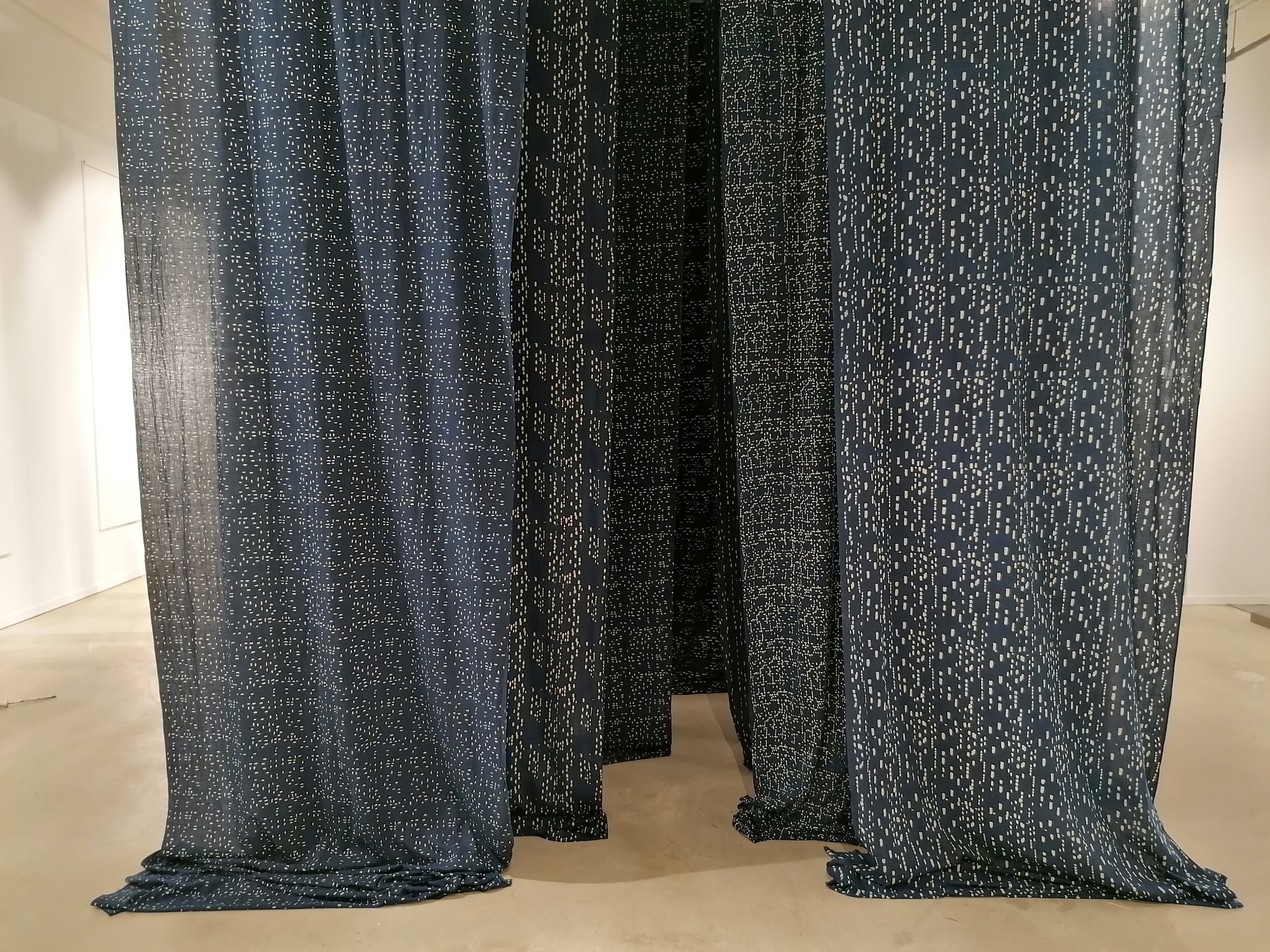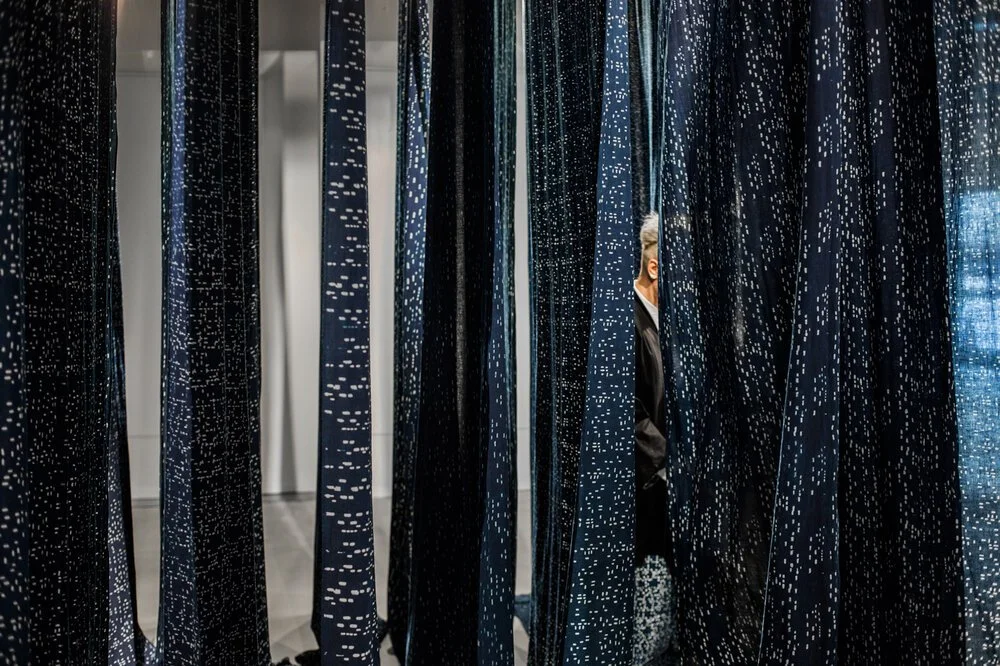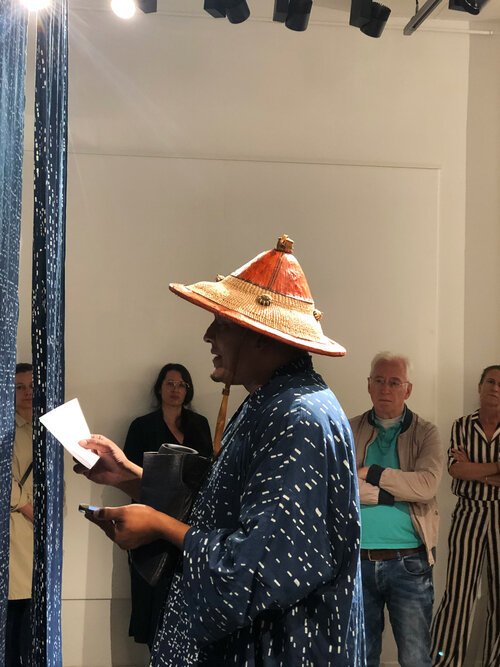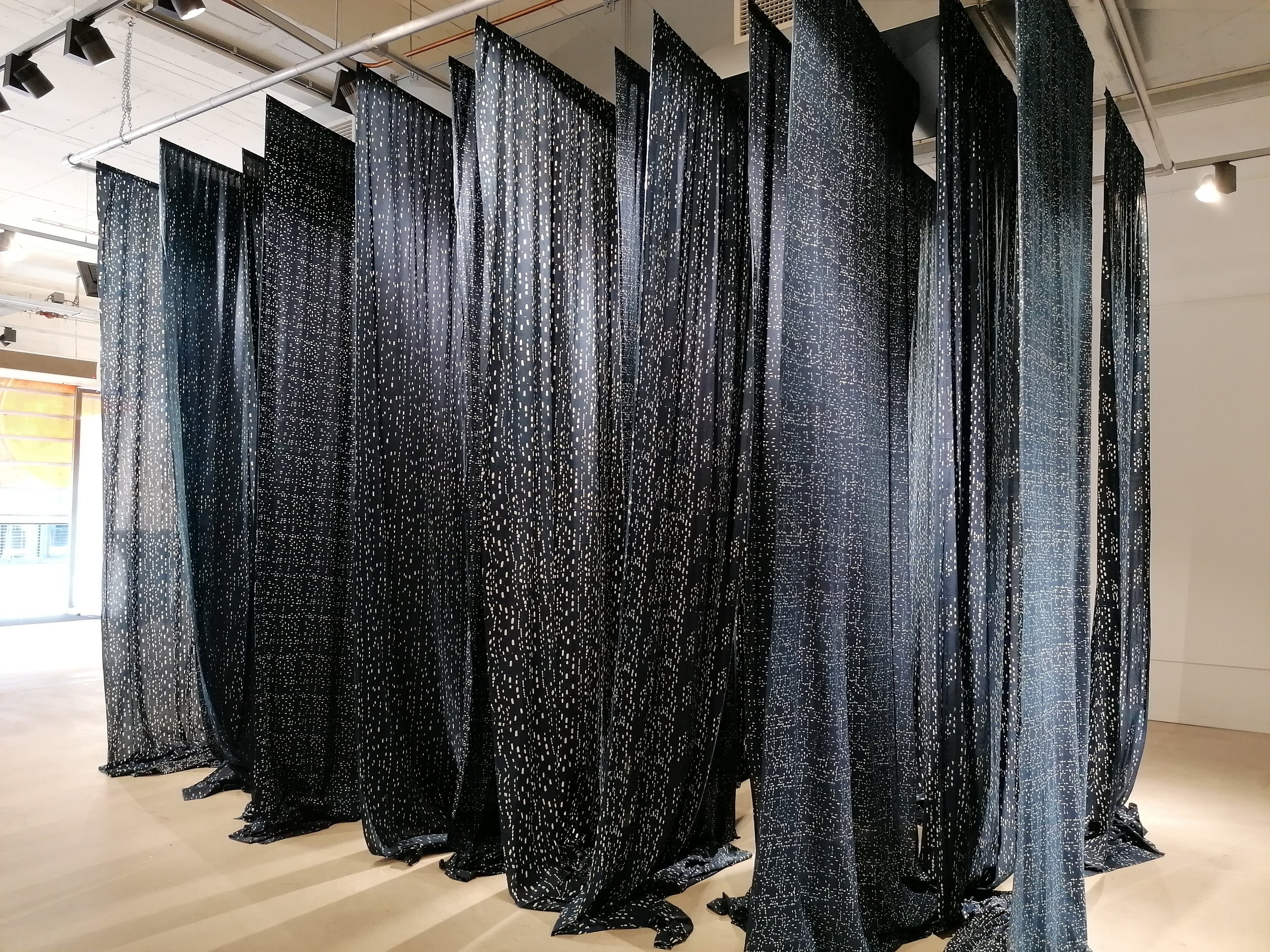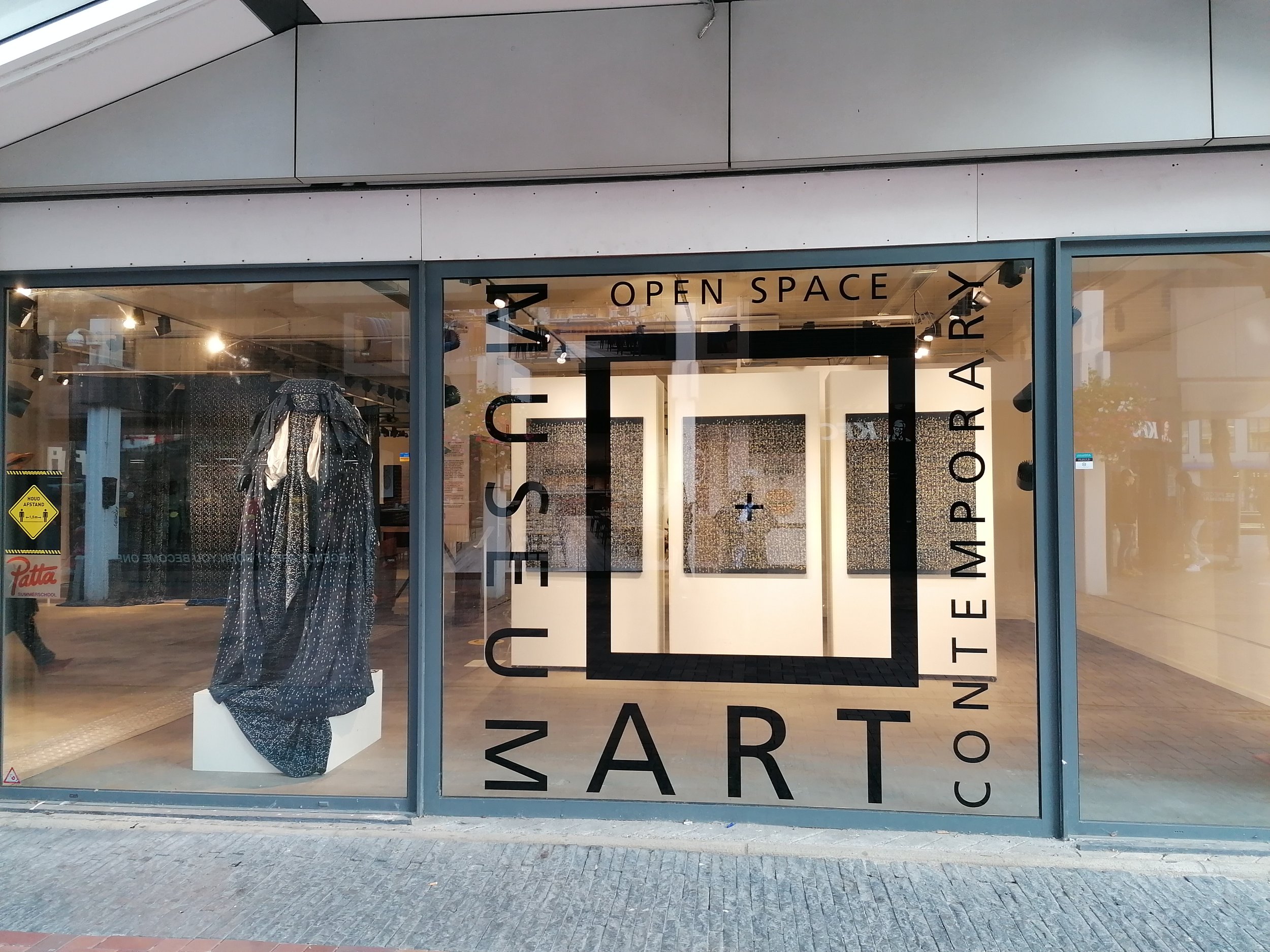ELECTRIC DUB STATION - OSCAM
Installation view of the exhibition at Oscam - Open Space Contemporary Art Museum - Amsterdam - Sonsbeek 20>24 Satellite.
Indigo is known as the “king of dyes.” For thousands of years, indigo symbolised both political power and was used by Africans in religious rituals. Indigo was and it’s still use as protection against evil spirits, Indigo is for many the Orisha Yemaja, a major water deity from the Yoruba religion.
Indigo was the hidden commodity of the slave trade before cotton. The first indigo dyed hemp clothing was the uniform of the enslaved, called “Negro cloth,” and deemed unfit for anyone to wear but the enslaved Black Indigenous American and enslaved African people. in the Americas.
The sonic structures and songs that the Africans sang in the indigo, sugar and coffee plantations had a profound influence on the history of music in America. The impact that Dub has had on contemporary music production can hardly be overestimated.
In Electric Dub Station, Iva Jankovic and Antonio Jose Guzman investigate the transatlantic, colonial history of Indigo. The African slave trade made Indigo particularly valuable, with production on Surinamese, Javanese and Indian plantations. EDS is a site-specific installation labyrinth and a Panamanian-Congolese procession. Made of Indian Ajrakh block printing techniques in Sufiyan Khatris studio in Ajrakpur, Gujarat, The Electric Dub Station project is part of The Supreme Exodus series, in which the artist investigates the connection with different cultures of the Black Atlantic (Paul Gilroy) and the hybrid Migratory Aesthetics (Mieke Ball).


